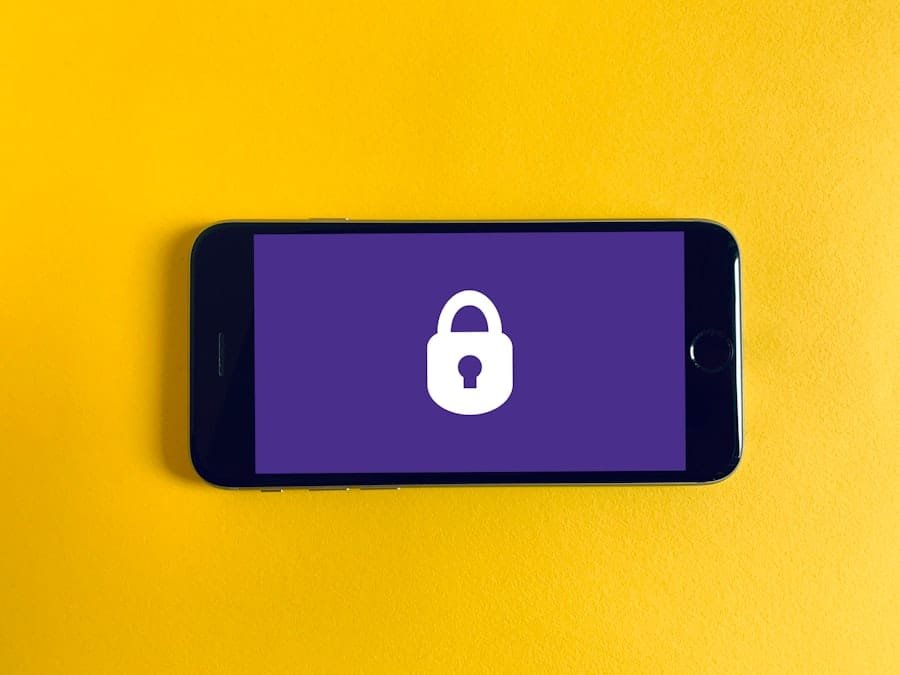The General Data Protection Regulation (GDPR) is a comprehensive data protection law that came into effect on 25 May 2018, fundamentally reshaping how organisations handle personal data within the European Union (EU) and beyond. The regulation was designed to enhance individuals’ control over their personal information and to simplify the regulatory environment for international business by unifying data protection laws across Europe. GDPR applies to any entity that processes the personal data of EU residents, regardless of where the entity is located, thus extending its reach globally.
This means that companies outside the EU must also comply if they handle data belonging to EU citizens. At its core, GDPR establishes a framework that mandates transparency, accountability, and security in data processing activities. It introduces several key principles, including data minimisation, purpose limitation, and the necessity of obtaining explicit consent from individuals before processing their data.
Furthermore, GDPR empowers individuals with rights such as the right to access their data, the right to rectification, and the right to erasure, commonly referred to as the “right to be forgotten.” Understanding these principles is crucial for organisations aiming to achieve compliance, as failure to adhere can result in significant fines and reputational damage.
Summary
- GDPR compliance is essential for businesses operating in the EU and handling personal data of EU citizens.
- Monitoring GDPR compliance ensures that businesses are consistently meeting the requirements and avoiding potential fines.
- Key aspects of GDPR compliance monitoring include data protection impact assessments, data breach notifications, and appointing a data protection officer.
- Tools and technologies such as data discovery and classification tools, data loss prevention software, and encryption technologies are crucial for GDPR compliance monitoring.
- Best practices for GDPR compliance monitoring include regular audits, employee training, and maintaining detailed records of data processing activities.
Importance of GDPR Compliance Monitoring
Monitoring compliance with GDPR is not merely a regulatory obligation; it is a critical component of an organisation’s overall data governance strategy. As businesses increasingly rely on data-driven decision-making, the importance of ensuring that personal data is handled in accordance with GDPR cannot be overstated. Effective compliance monitoring helps organisations identify potential risks and vulnerabilities in their data processing activities, allowing them to take proactive measures to mitigate these risks before they escalate into serious breaches.
Moreover, GDPR compliance monitoring fosters a culture of accountability within organisations. By establishing clear processes for tracking compliance efforts, organisations can demonstrate their commitment to protecting personal data and respecting individuals’ rights. This not only enhances trust among customers and stakeholders but also positions the organisation as a responsible entity in an era where data privacy concerns are paramount.
In an environment where consumers are increasingly aware of their rights regarding personal data, organisations that prioritise compliance monitoring are likely to gain a competitive advantage.
Key Aspects of GDPR Compliance Monitoring

Several key aspects underpin effective GDPR compliance monitoring. First and foremost is the establishment of a robust data inventory. Organisations must maintain an up-to-date record of all personal data they process, including details about the data’s origin, purpose, and retention period.
This inventory serves as a foundational element for compliance efforts, enabling organisations to assess their data processing activities against GDPR requirements. Another critical aspect is the implementation of regular audits and assessments. Conducting periodic reviews of data processing activities allows organisations to evaluate their compliance status and identify areas for improvement.
These audits should encompass not only internal processes but also third-party vendors who may have access to personal data. By ensuring that all parties involved in data processing adhere to GDPR standards, organisations can mitigate risks associated with non-compliance.
Tools and Technologies for GDPR Compliance Monitoring
In the digital age, leveraging technology is essential for effective GDPR compliance monitoring. Various tools and software solutions have emerged to assist organisations in managing their compliance efforts efficiently. Data mapping tools, for instance, help organisations visualise their data flows and understand how personal data moves through their systems.
This visibility is crucial for identifying potential vulnerabilities and ensuring that data processing activities align with GDPR principles. Additionally, privacy management platforms offer comprehensive solutions for managing consent, tracking data subject requests, and maintaining records of processing activities. These platforms often include features such as automated workflows for handling requests related to individuals’ rights, ensuring that organisations can respond promptly and effectively.
Furthermore, security tools that monitor data breaches and unauthorised access are vital for maintaining compliance, as they enable organisations to detect and respond to incidents in real time.
Best Practices for GDPR Compliance Monitoring
Implementing best practices for GDPR compliance monitoring is essential for organisations seeking to navigate the complexities of the regulation effectively. One fundamental practice is fostering a culture of privacy within the organisation. This involves training employees at all levels on GDPR principles and their responsibilities regarding personal data handling.
By instilling a sense of ownership over data protection, organisations can create an environment where compliance becomes a shared priority. Another best practice is to establish clear policies and procedures for handling personal data. These policies should outline the steps employees must take when processing personal information, including guidelines for obtaining consent and responding to data subject requests.
Regularly reviewing and updating these policies ensures that they remain relevant in light of evolving regulations and organisational changes. Additionally, appointing a Data Protection Officer (DPO) can provide dedicated oversight for compliance efforts, ensuring that there is a knowledgeable resource available to address any questions or concerns related to GDPR.
Challenges of GDPR Compliance Monitoring

Despite the clear benefits of GDPR compliance monitoring, organisations face several challenges in implementing effective strategies. One significant hurdle is the complexity of the regulation itself. The intricacies of GDPR can be daunting, particularly for smaller organisations with limited resources or expertise in data protection.
Navigating the various requirements and ensuring that all aspects of compliance are addressed can be overwhelming. Moreover, the dynamic nature of technology poses additional challenges. As organisations adopt new technologies and digital tools, they must continuously assess how these innovations impact their compliance status.
For instance, cloud computing solutions may introduce new risks related to data storage and access that require careful consideration under GDPR. Keeping pace with technological advancements while ensuring compliance necessitates ongoing vigilance and adaptability.
Benefits of GDPR Compliance Monitoring
The advantages of robust GDPR compliance monitoring extend beyond mere regulatory adherence; they encompass broader organisational benefits as well. One notable benefit is enhanced customer trust. In an age where consumers are increasingly concerned about their privacy, demonstrating a commitment to GDPR compliance can significantly bolster an organisation’s reputation.
Customers are more likely to engage with businesses that prioritise data protection and transparency in their operations. Additionally, effective compliance monitoring can lead to improved operational efficiency. By streamlining processes related to data handling and implementing automated solutions for managing consent and requests, organisations can reduce administrative burdens and allocate resources more effectively.
This not only enhances productivity but also allows teams to focus on strategic initiatives rather than being bogged down by compliance-related tasks.
Future Trends in GDPR Compliance Monitoring
As the landscape of data protection continues to evolve, several trends are emerging that will shape the future of GDPR compliance monitoring. One prominent trend is the increasing integration of artificial intelligence (AI) and machine learning into compliance processes. These technologies can analyse vast amounts of data quickly and accurately, identifying patterns and anomalies that may indicate non-compliance or potential breaches.
By harnessing AI capabilities, organisations can enhance their monitoring efforts and respond more effectively to emerging threats. Another trend is the growing emphasis on privacy by design principles. As organisations develop new products and services, there is a heightened awareness of the need to incorporate privacy considerations from the outset.
This proactive approach not only aligns with GDPR requirements but also positions organisations as leaders in responsible data handling practices. As consumers become more discerning about how their data is used, businesses that prioritise privacy by design will likely gain a competitive edge in the marketplace. In conclusion, navigating the complexities of GDPR compliance monitoring requires a multifaceted approach that encompasses understanding the regulation’s principles, leveraging technology effectively, and fostering a culture of accountability within organisations.
As businesses continue to adapt to an ever-changing digital landscape, staying ahead of compliance challenges will be essential for building trust with customers and ensuring long-term success in an increasingly privacy-conscious world.
If you are interested in learning more about the importance of data protection and compliance, you may want to check out the article on driving traffic to online stores. This piece discusses the various strategies that businesses can use to attract customers to their online platforms while ensuring that they are GDPR compliant. By implementing these tactics, companies can increase their online visibility and sales while also safeguarding their customers’ personal information.
FAQs
What is GDPR Compliance Monitoring?
GDPR compliance monitoring refers to the process of regularly checking and assessing an organization’s adherence to the General Data Protection Regulation (GDPR) requirements. This includes monitoring data processing activities, ensuring the rights of data subjects are protected, and maintaining appropriate security measures for personal data.
Why is GDPR Compliance Monitoring Important?
GDPR compliance monitoring is important because it helps organizations ensure that they are meeting the legal requirements set out by the GDPR. It also helps in identifying and addressing any potential non-compliance issues, thereby reducing the risk of fines and penalties.
What are the Key Aspects of GDPR Compliance Monitoring?
Key aspects of GDPR compliance monitoring include conducting regular data protection impact assessments, implementing appropriate technical and organizational measures to ensure data security, maintaining records of processing activities, and regularly reviewing and updating data protection policies and procedures.
How is GDPR Compliance Monitoring Enforced?
GDPR compliance monitoring is enforced through regulatory authorities, such as the Information Commissioner’s Office (ICO) in the UK. These authorities have the power to investigate compliance issues, issue warnings, impose fines, and take other enforcement actions to ensure organizations comply with the GDPR.
What are the Benefits of GDPR Compliance Monitoring?
The benefits of GDPR compliance monitoring include building trust with customers and stakeholders, reducing the risk of data breaches and associated costs, avoiding fines and penalties, and demonstrating a commitment to data protection and privacy.
